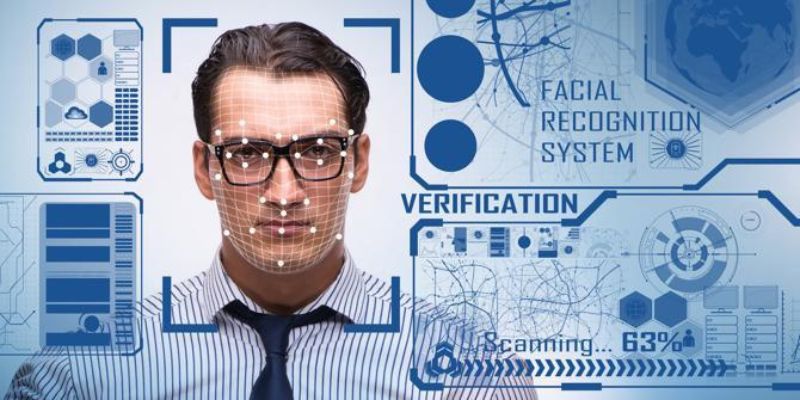Face recognition technology, which uses sophisticated algorithms to match faces from photos or videos against a database, has completely changed how we identify and validate people. Face detection, alignment, feature extraction, and matching are some of the stages that this technology uses to function. Face recognition has therefore been used in a variety of industries, including social networking, retail, and security.
Face recognition’s speed and efficiency are what gives it its strength. Face recognition enables non-contact identification, in contrast to conventional identification techniques like fingerprinting or ID cards. In busy places like stadiums or airports, where prompt identification can improve security and expedite procedures, this capability is very helpful.
The Operation of Face Recognition
Face Detection: Finding a face in an image is the initial stage of face recognition. Algorithms are used in this procedure to separate the face from the backdrop and recognize facial features. The face is aligned by the system to standardize its size and orientation after detection.
Feature Extraction: The method takes distinctive facial traits after alignment. The curvature of the jawline, the separation between the eyes, and other distinctive traits may be among these features. A “feature vector,” or digital representation of the face, is created from the retrieved data.
Matching: This feature vector is compared to a database of recognized faces in the last phase. The system identifies the person if a match is discovered. This technique is appropriate for real-time applications because it happens quickly, frequently in a matter of seconds [2][4].
Face Recognition Applications
Face recognition technology is widely used in many different fields.
Security: To identify suspects in surveillance films, law enforcement organizations use facial recognition technology.
Retail: Retailers can utilize this technology to improve customized marketing efforts and evaluate consumer behavior.
Social Media: Face recognition is used by sites such as Facebook to automatically tag users in pictures.
Access Control: To control access to restricted locations, organizations use facial recognition software.
These uses demonstrate how adaptable facial recognition technology is and how it can be used to increase security and efficiency in commonplace situations.
Face Recognition Advantages
Face recognition’s accuracy and quickness are two of its main advantages. The technology is perfect for settings where time is of the essence since it can process enormous amounts of data rapidly. It also lessens the human mistake that comes with manual identification techniques.
Its non-invasiveness is another important benefit. Face recognition enables identification from a distance, in contrast to biometric techniques that necessitate physical contact, such as fingerprint scanning or iris recognition. This feature promotes wider public acceptability while improving user ease.
Furthermore, the accuracy of facial recognition systems has increased due to developments in artificial intelligence. More accurate findings are produced by modern algorithms that can adjust to changes in lighting, angles, and facial expressions.
Issues with Face Recognition
Notwithstanding its benefits, face recognition technology has a number of issues that could reduce its efficacy:
Privacy Concerns: There are serious privacy concerns with the usage of face recognition. Many people find it uncomfortable to be watched without their permission. Calls for more stringent laws controlling its usage have arisen as a result of this worry.
Research has indicated that certain facial recognition systems display prejudice based on gender or race. Certain groups may be unfairly treated and misidentified as a result of these biases.
Environmental Factors: Accurate biometric identification may be hampered by changes in illumination or facial obstructions, such as masks. These elements present difficulties for systems placed in unregulated settings.
Face Recognition’s Future Directions
As technology develops further, facial recognition has a bright future. Researchers are looking into ways to improve algorithms that take into consideration different demographics and environmental variables in order to increase accuracy and decrease biases.
Furthermore, more reliable identification systems might be produced by combining facial recognition with other biometric technologies. Combining fingerprints or voice recognition with facial data, for example, might improve security while resolving certain privacy issues by giving consumers greater control over their data.
Furthermore, how face recognition technology develops in the future will be greatly influenced by ethical issues. Developers will need to make transparency and consent a priority in their applications as public knowledge of privacy issues increases.
Conclusion
In conclusion, face recognition technology is a potent instrument with enormous promise in a number of industries. Its rapid and precise identification of people has many advantages, but there are drawbacks as well that need to be considered. Face recognition technology will probably need to strike a balance between innovation and privacy rights as developments progress and ethical issues gain prominence.
Stakeholders can endeavor to create solutions that optimize advantages while lowering dangers related to its use by being aware of the technology’s strengths and weaknesses. Building public confidence in face recognition technologies will require constant discussion about ethics and regulations as we traverse this changing environment.







